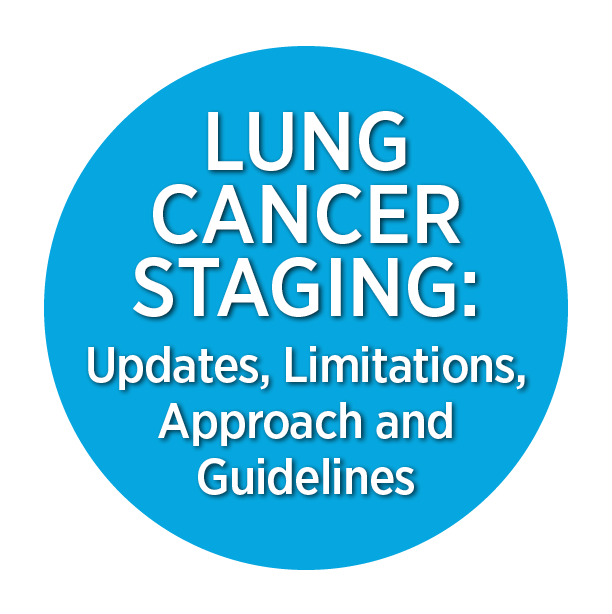Get set for the first global discussion of the 9th edition of the IASLC TNM classification guidelines. While the T staging criteria remain the same, N and M criteria have been updated.

“The writing committee divided the N stage into new categories, N2a and N2b,” said Takahiro Nakajima, MD, PhD, Associate Professor of General Thoracic Surgery, Dokkyo Medical University, Tochigi, Japan. “N2a is single station nodal involvement and N2b is multistation involvement. Thoracic surgeons know that multistation N2 disease has worse progression-free and overall survival than single station disease.
“They also divided the M1C criteria into M1C1 and M1C2 for single organ and multiorgan metastasis,” Dr. Nakajima said. “This will give us better guidance for adjuvant and neoadjuvant treatment and help us understand who should have surgery and who should have nonsurgical treatment. The new criteria move us toward more precision medicine for the patient with M1 disease.”
Dr. Nakajima will co-chair Lung Cancer Staging: Updates, Limitations, Approach and Guidelines, which will take place from 14:00 – 15:15 PDT on Sunday, September 8, in Room 30BC of the San Diego Convention Center. The new guidelines update the 8th edition, which was published in 2017. Work on the 10th edition, to be released in 2031, is already underway.

14:00-15:15 PDT, Sunday, September 8
Room 30BC, San Diego Convention Center
Lung Cancer Staging: Updates, Limitations, Approach and Guidelines
Hear from the experts as they have the first global discussion of the 9th edition of the TNM staging guidelines.

“Stage defines the anatomical extent of disease,” said 9th edition committee chair Hisao Asamura, MD, Specially-appointed Professor of Thoracic Surgery, Tokyo Dental College Ichikawa General Hospital, Tokyo, Japan. “Staging is the basis for determining the treatment of our patients, so changes in the definition of stage might bring changes in clinical practice. Eligibility in clinical trials is also defined by stage, so there might be some changes in the selection of patients for trials.”
Because stage is an anatomical definition, it does not currently include non-anatomical factors such as molecular alterations, Dr. Asamura said. That may change with the 10th edition as clinical evidence incorporates a rapidly growing body of molecular markers closely associated with prognosis.
Tobacco use, both past and current, is also emerging as a useful prognostic marker.

“We have already seen this in other cancer sites such as head and neck—where they incorporate other factors into staging including HPV (human papillomavirus) status—and breast cancer, which looks at factors like HER-2 mutations,” said Lawson Eng, MD, SM, Medical Oncologist at Princess Margaret Cancer Centre and Assistant Professor of Medicine, University of Toronto, Toronto, Canada.
“Tobacco use history can help us segregate patients into different risk groups regarding prognosis, to potentially help with treatment decision making such as intensifying or de-intensifying treatment, and even to select a more appropriate treatment based.”
Advances in imaging and data collection also play a role in new staging guidelines. MRI imaging can add more granularity to staging compared to CT, which may help to refine staging. The new guidelines draw on more data, from more global sources, in more uniform formats.

“For decades, we used a system for nodal disease that did not require precise quantification of each nodal station,” said Edith Marom, MD, Professor and Head of Thoracic Imaging at the Chaim Sheba Medical Center, Tel Aviv University, Tel Aviv, Israel. “In the past, clinical staging only documented gross anatomical locations, such as sidedness. Yet, we all had this notion that survival worsens the more positive nodes patients have. Thanks to the more granular nodal data we had, we were able to better quantify N2 data and separate patients into prognostically different groups. This prognostic difference between N2a single and N2b multistation involvement applies to clinical staging as well, guiding patients to the appropriate treatment before surgery.”
“The same with metastases,” she continued. “We were able to see that for patients with multiple metastases, there is different survival with one organ system as compared to several organs.”

The updated guidelines are already changing clinical practice. Interventional pulmonologists are looking more closely at lymph node involvement, among other adjustments.
“I used to take maybe four lymph node stations, but it the past few months it has been very important for my multidisciplinary team to have at least six stations,” said Lucia Viola, MD, MS, of the Colombian Pulmonology Foundation and the Luis Carlos Sarmiento Angulo Cancer Treatment and Research Center, Bogotá, Colombia. “We are getting samples from lymph nodes as small as 5 mm because medical oncologists and thoracic surgeons are asking for higher quality lymph node staging. These new standards are already having an impact on our practice.”





